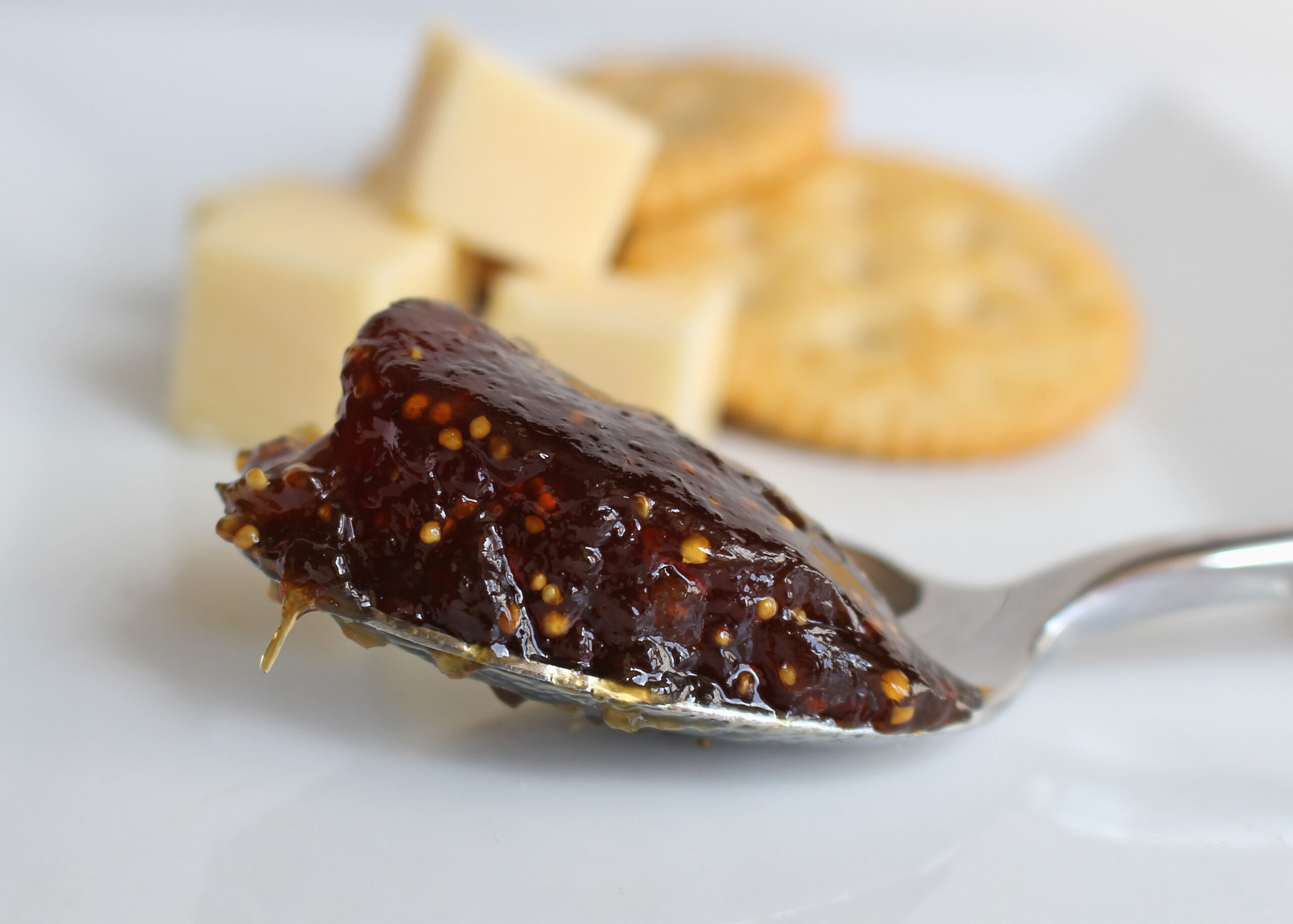Preserves are similar to jelly with the exception that whole or large pieces of fruit are used in the making of preserves. The figs used for the preserve should be first-ripe instead of soft-ripe and should be uniform in size. Uniformity of the raw product is required to ensure that the pieces will cook evenly.
Processing of fig preserves typically involves cooking figs with sugar, lemon juice, and water until they reach a thick, spreadable consistency. Some recipes may also call for the addition of spices such as cinnamon or nutmeg. The first step in preparing fig preserves is to wash the figs and remove the stems. The figs are then chopped or mashed, depending on the desired texture of the preserves. The chopped or mashed figs are then combined with sugar, lemon juice, and water in a large pot and brought to a boil. Once the mixture comes to a boil, the heat is reduced to a simmer and the figs are cooked until they reach the desired consistency. This can take anywhere from 30 minutes to an hour, depending on the recipe and the number of figs being used.
Once the fig preserves have reached the desired consistency, they are typically canned or jarred for long-term storage. The jars should be sterilised beforehand to prevent spoilage. Fig preserves can be used in a variety of ways, including as a spread for toast, a topping for yogurt or ice cream, or as a filling for pastries or cakes.
Process description

Sorting
This is done to select the best suitable raw materials for manufacturing the value added end product. For making the preserve, select 5,678 kg of firm, sound figs. No over-ripe or broken figs should be included in the raw material.

Pre-treatment
Sprinkle 1 cup of baking soda over the fruit, then cover the figs with 6 litres of boiling water and let it stand for 15 minutes. Drain the solution and rinse the fruit well with clear, cold water. Let the fruit drain.
Syrup
The syrup is prepared by adding 8 cups of sugar to 2 litres of water and boiling the mixture for 5 minutes. After boiling the syrup is skimmed.
Cooking
Cooking involves exposing a food product to hot water or steam for a predetermined period of time. Add the figs slowly and gradually to the syrup so as not to cool the syrup down. Cook the figs in the syrup for about 2 hours until the figs are clear. After cooking, the figs are carefully lifted out of the syrup and placed in shallow pans.

Pre-treatment
Continue boiling the syrup if it is too thin until it reaches the desired thickness and then pour it over the figs. The figs must be completely covered with syrup and then allowed to stand overnight.
Bottling
Bottling involves preserving and sealing the product in a glass bottle. After allowing the figs to stand overnight, the fruit is packed cold into sterilised jars. The figs must be packed in the jars so that all the stems point upward. After packing, the jars are then filled completely with syrup.
Final product
The filled jars are processed at simmering temperature for 15 minutes.
Published with acknowledgement to the ARC Agricultural Engineering for the use of their manuals. Visit www.arc.agric.za for more information.









